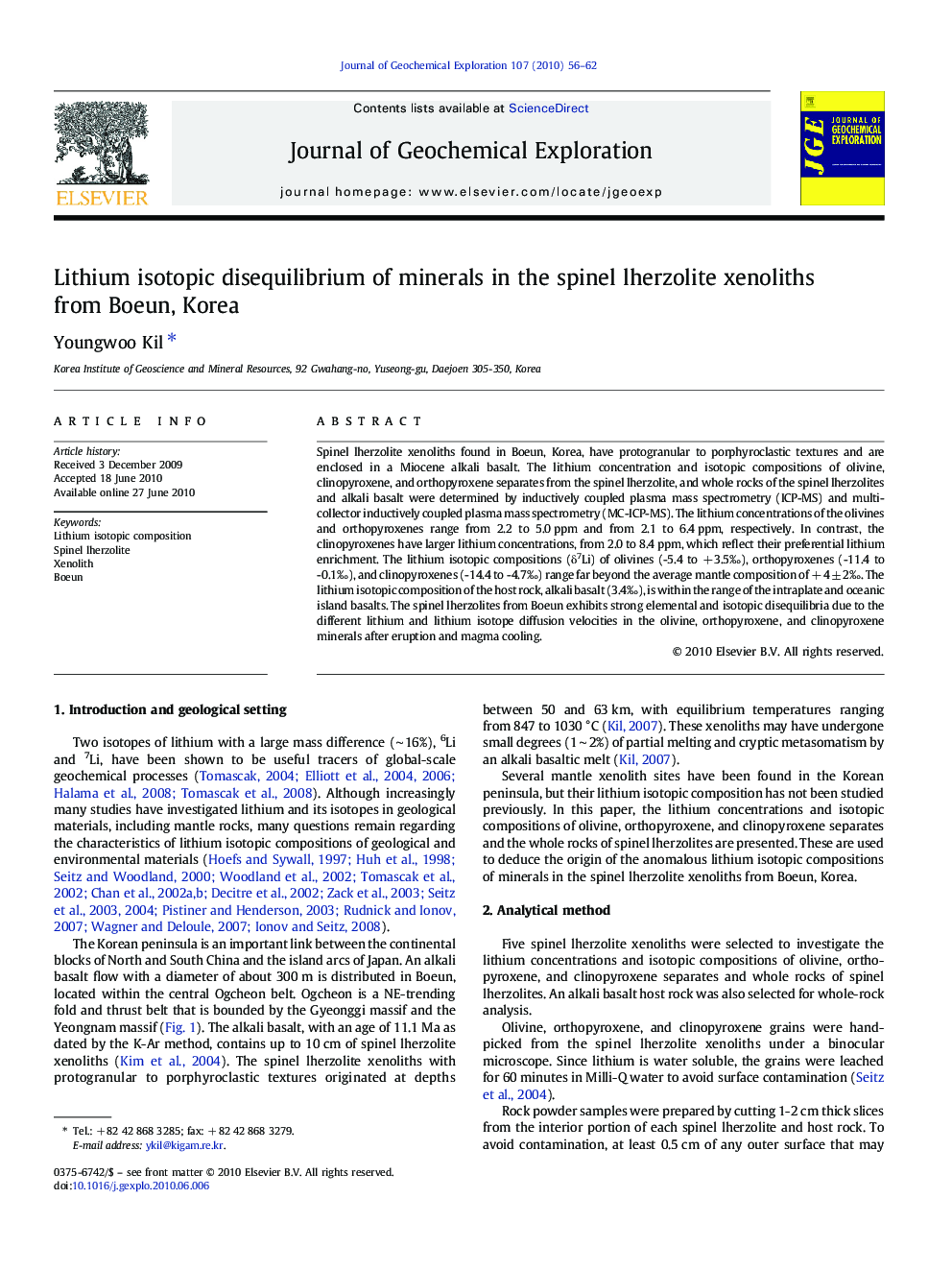| Article ID | Journal | Published Year | Pages | File Type |
|---|---|---|---|---|
| 4457938 | Journal of Geochemical Exploration | 2010 | 7 Pages |
Spinel lherzolite xenoliths found in Boeun, Korea, have protogranular to porphyroclastic textures and are enclosed in a Miocene alkali basalt. The lithium concentration and isotopic compositions of olivine, clinopyroxene, and orthopyroxene separates from the spinel lherzolite, and whole rocks of the spinel lherzolites and alkali basalt were determined by inductively coupled plasma mass spectrometry (ICP-MS) and multi-collector inductively coupled plasma mass spectrometry (MC-ICP-MS). The lithium concentrations of the olivines and orthopyroxenes range from 2.2 to 5.0 ppm and from 2.1 to 6.4 ppm, respectively. In contrast, the clinopyroxenes have larger lithium concentrations, from 2.0 to 8.4 ppm, which reflect their preferential lithium enrichment. The lithium isotopic compositions (δ7Li) of olivines (-5.4 to + 3.5‰), orthopyroxenes (-11.4 to -0.1‰), and clinopyroxenes (-14.4 to -4.7‰) range far beyond the average mantle composition of + 4 ± 2‰. The lithium isotopic composition of the host rock, alkali basalt (3.4‰), is within the range of the intraplate and oceanic island basalts. The spinel lherzolites from Boeun exhibits strong elemental and isotopic disequilibria due to the different lithium and lithium isotope diffusion velocities in the olivine, orthopyroxene, and clinopyroxene minerals after eruption and magma cooling.
Research Highlights►Spinel lherzolites exhibit lithium isotopic disequilibrium. ►Disequilibrium of lithium isotope was caused of diffusion velocities. ►Lithium isotopic fractionation could be the result of magma cooling.
